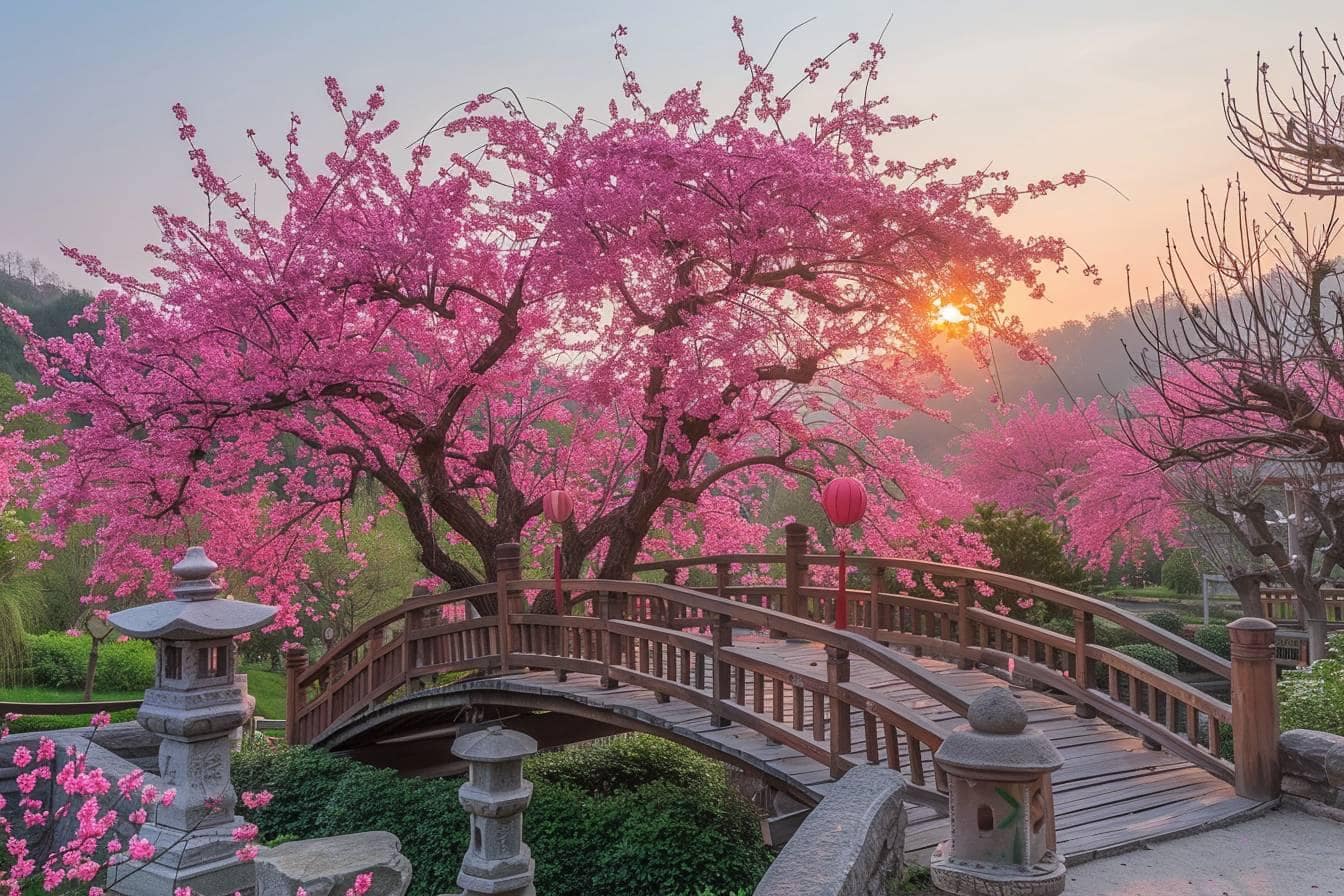Planning a trip to Japan has always fascinated me, whether for the unbeaten tracks around the Japanese Alps or those breezy cherry blossom walks through the gardens of Kyoto.
As a web developer turned full-time traveler, I’ve always had a knack for folding my laptops, packing my gear, and heading off to places that stories are made of.
With its ethereal beauty and contrasting landscapes, Japan stands out as one of those places. But when is the best time for this adventure? Let’s unravel the mystery together.
In this article
- Travel in Japan's seasons
- A month-by-month guide to Visiting Japan
- Evergreen Japan experiences
- Why considering a local expert's advice matters
Travel in Japan’s seasons
Having experienced Japan in different seasons, I’ve realized that each season paints Japan uniquely, presenting a different set of wonders. Spring (March to May) is undoubtedly famous for the cherry blossom (sakura) bloom.
Picture this: you’re walking through a park with cherry blossom petals fluttering in the breeze, a scene from a painting. However, it’s also the season when Japan sees most of its tourists, leading to crowded spots and higher prices, which I learned the hard way on my second visit.
Autumn (September to November) offers a brilliant palette of reds and gold, with the Koyo (autumn leaves) providing a spectacular backdrop to temples and gardens. I still remember my trek in the Japanese Alps, mesmerizing and surrounded by vibrant fall colors.
On the other hand, summer (June to August) brings about a hot and humid climate, coupled with the rainy season in early summer, making it ideal for exploring the cooler, northern regions like Hokkaido or the Japanese Alps.
Winter (December to February) transforms parts of Japan into wintry wonderlands, perfect for skiing in Hokkaido or enjoying onsen (hot springs) amidst snowfall.
However, each season has its pros and cons.
- Spring and autumn, with their temperate weather and stunning natural beauty, attract the most visitors, leading to crowded attractions and booked-out accommodations.
- Summer, while hotter, offers a break from the tourist rush, except during Obon and other festivals.
- Winter is less crowded, except for areas popular for winter sports. It offers serene landscapes and unique experiences, like snow monkeys in hot springs.
A month-by-month guide to Visiting Japan
My travels have taught me that knowing what to expect each month can significantly enhance the travel experience. Here’s a breakdown :
| Month | Highlights | Considerations |
|---|---|---|
| January | Skiing in Hokkaido, New Year festivities | Colder weather, especially in northern regions |
| February | Sapporo Snow Festival | Peak ski season, potentially higher prices in ski resorts |
| March | Beginning of cherry blossom in southern Japan | Crowds start to increase with cherry blossom viewing |
| April | Very crowded; book accommodations and transportation in advance | Hydrangea blooms at the start of the rainy season |
| May | Lush green landscapes post-bloom, Golden Week holiday | Avoid traveling during Golden Week due to domestic tourism peak |
| June | Obon festival, fireworks show | Humid, rainy weather may affect outdoor plans |
| July | Mount Fuji climbing season begins, summer festivals | Hot and humid weather, crowded with local tourists |
| August | It can still be quite warm, typhoon season | Continued heat and humidity, Obon travel rush |
| September | Decreasing temperatures, less crowded | It can still be quite warm, typhoon season |
| October | Autumn colors start in the north | Milder weather is a popular time for visiting |
| November | Peak of autumn colors in central Japan | Very popular with tourists, early booking essential |
| December | Winter illuminations, Christmas markets | Colder weather, especially in the north |
Each month offers something unique, from festivals to natural beauty. However, timing is crucial to avoid crowds or catch natural phenomena at their peak.

Evergreen Japan experiences
Some experiences in Japan are timeless, unaffected by the changing seasons. For instance, you can enjoy a gastronomical adventure year-round through Japan’s diverse cuisine, from the freshest sushi in Tokyo to the heartwarming ramen in Sapporo.
Similarly, exploring the bustling streets of Tokyo’s Shinjuku or the historic Gion district of Kyoto provides an immersive experience of Japan’s blend of modern and traditional cultures, irrespective of when you visit.
I’ve spent countable nights under the radiant neon lights of Tokyo only to find solace in the serene gardens of Kyoto the next day. Japan’s contrasting beauty doesn’t rely on perfect timing but an open heart and an adventurous spirit.
I remember navigating through Tokyo’s intricate subway system, which initially seemed daunting but quickly turned into a thrilling challenge to conquer. These evergreen experiences define the heart and soul of Japan, showcasing its enduring allure.
Why considering a local expert’s advice matters
I’ve learned the invaluable lesson of tapping into local wisdom throughout my travels. Speaking to a certified Japan specialist before planning your trip can save you from common pitfalls and uncover hidden gems that only locals are privy to.
These experts can tailor your experience, whether you’re seeking the adrenaline rush of Tokyo’s urban jungle, the serene paths of ancient shrines, or the off-the-beaten-path adventures in Japan’s countryside.
The highlight of discussing my travel plans with a local expert was finding out about a secluded onsen town not far from Nagano. It was an oasis of calm, far removed from the tourist trails, where I could indulge in the hot springs surrounded by snow.
This experience would have remained undiscovered without that invaluable local advice. Thus, tapping into local knowledge enhances your journey and brings you closer to Japan’s authentic essence.
Japan, with its rich tapestry of landscapes, seasons, and experiences, beckons travelers looking for an adventure that transcends the ordinary. Through careful planning, embracing each season for its unique beauty, and seeking local expertise, you can uncover the myriad dimensions of this fascinating country.
So, pack your bags, but leave some space for the experiences and memories you’ll likely bring back home.




